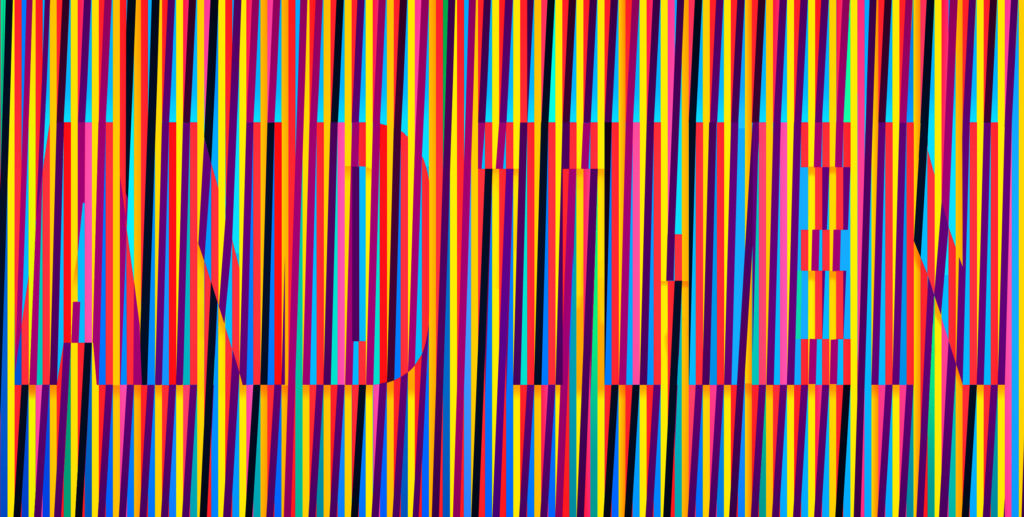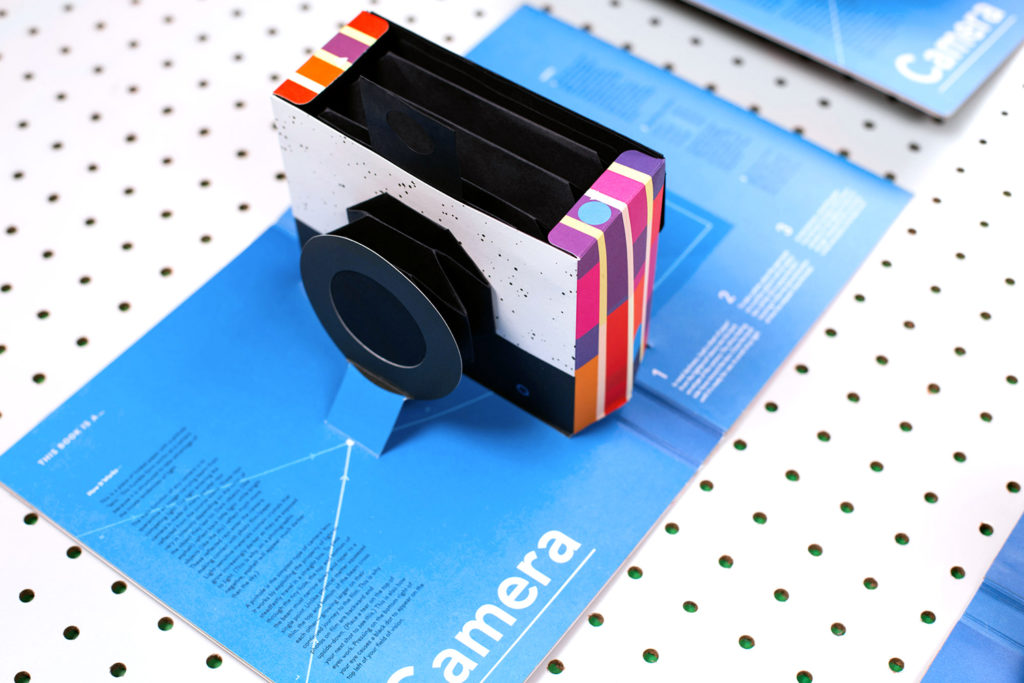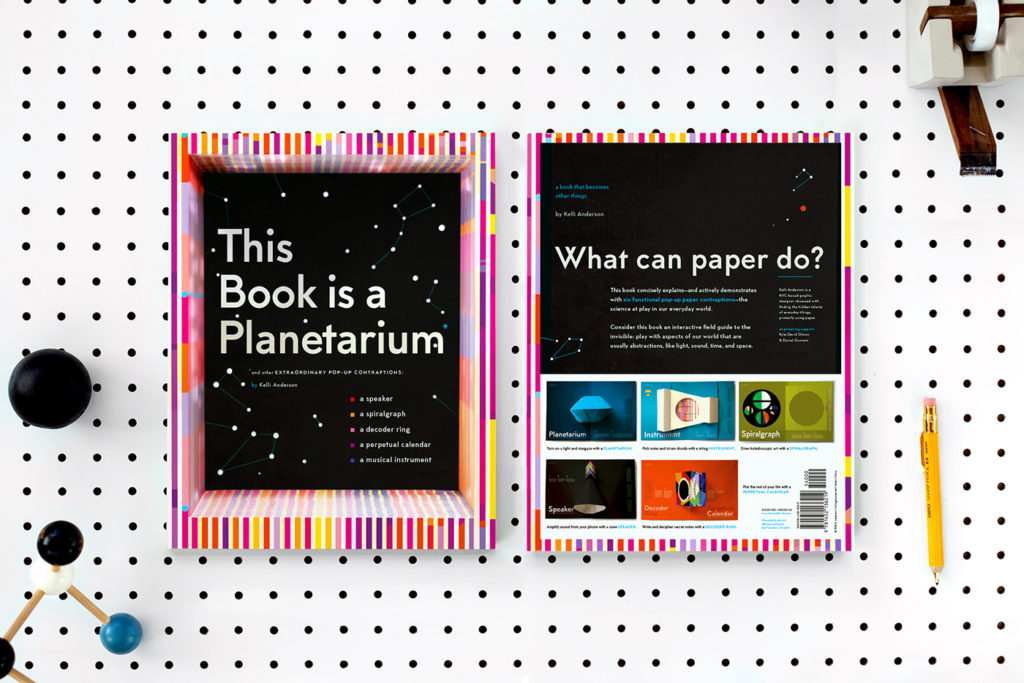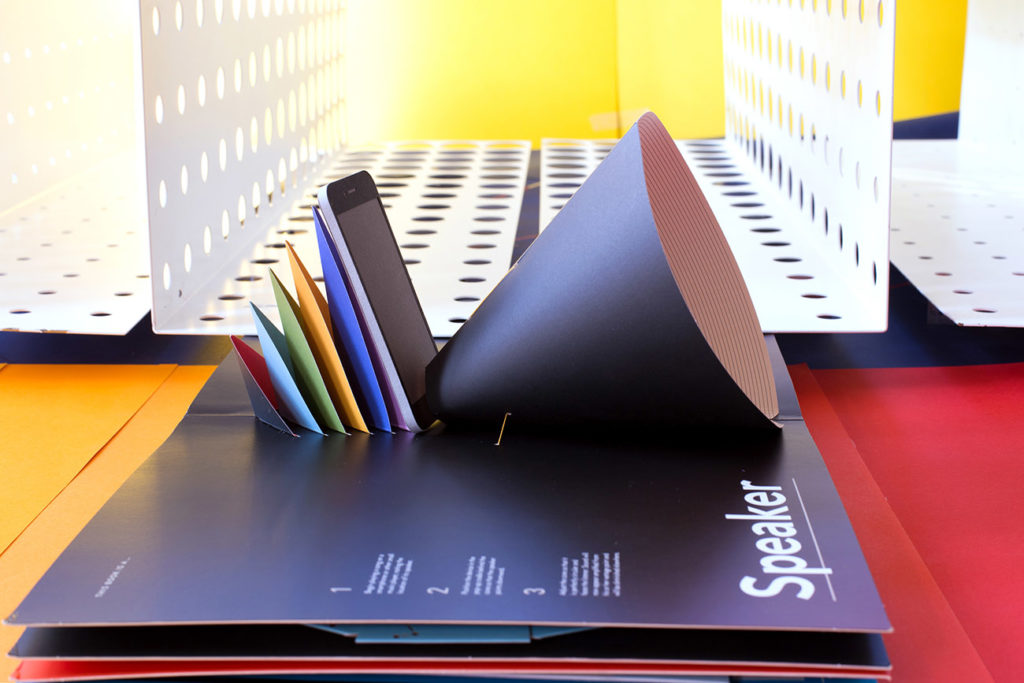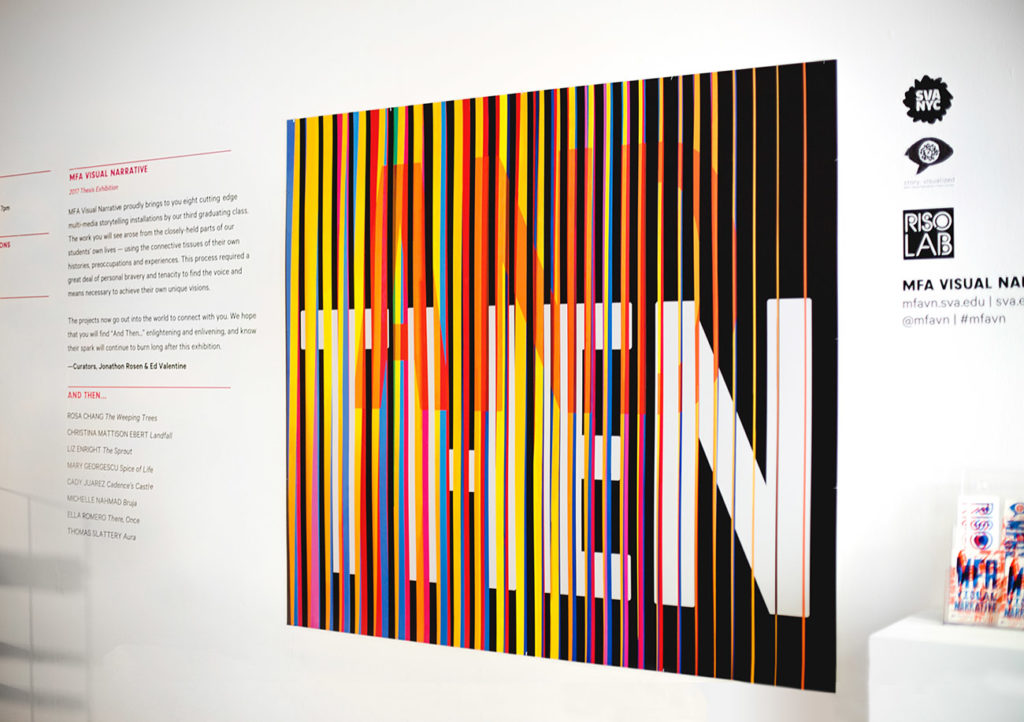Kelli Anderson est artiste et designer et son approche est de repousser sans cesse les limites des matériaux et des formats ordinaires en cherchant des possibilités cachées dans le monde physique et numérique. En 2008, elle a travaillé au sein des Yes Men pour distribuer une copie méticuleusement recréée du New York Times – remplie seulement d’articles d’un futur utopique. Au sein de ce collectif, ils ont remporté le Prix de Distinction Ars Electronica. Plus tard, en 2011, elle a créé un fabuleux tourne-disque en papier qui a attiré l’attention de nombreux médias. En 2011, elle quitte son poste de photographe des collections numériques à l’American Museum of Natural History pour se consacrer à son travail de créatrice indépendante. Aujourd’hui, elle enseigne également l’histoire de l’art dans le cadre du programme PreCollege de Pratt chaque été.
[Interview réalisée par Olivier Saint-Léger dans le cadre de Adobe Max – Un immense merci à lui !]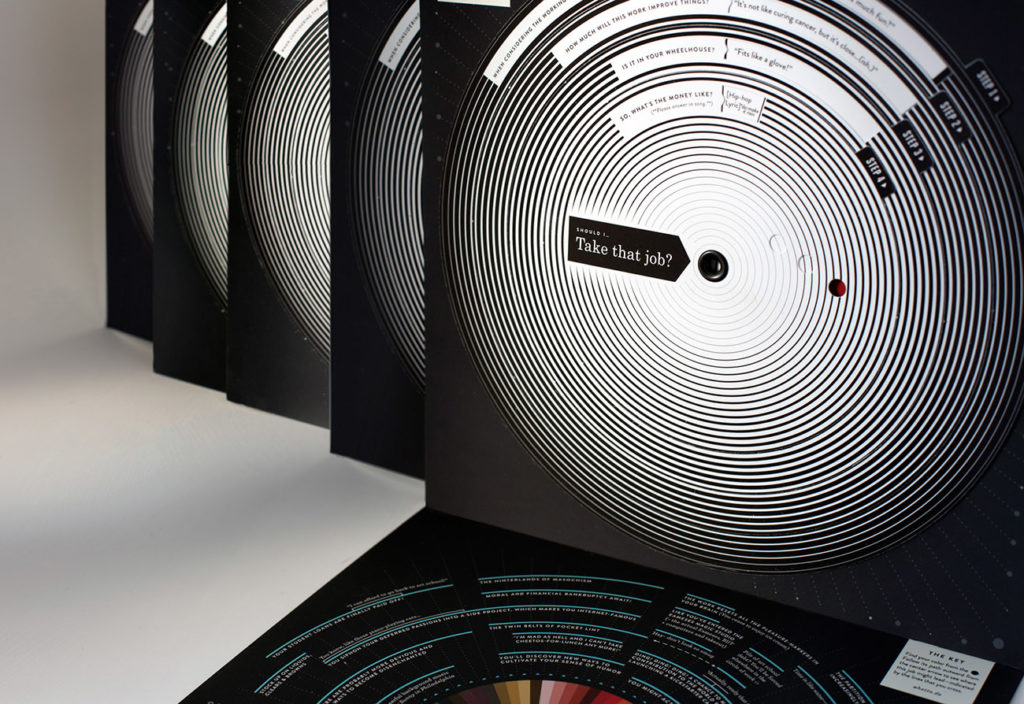
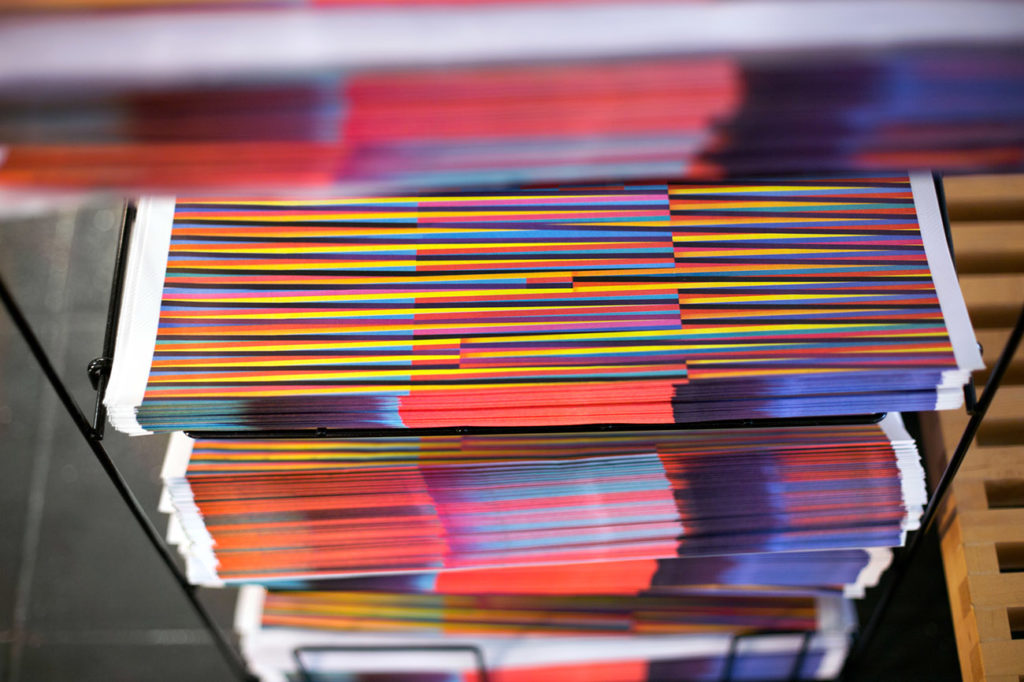
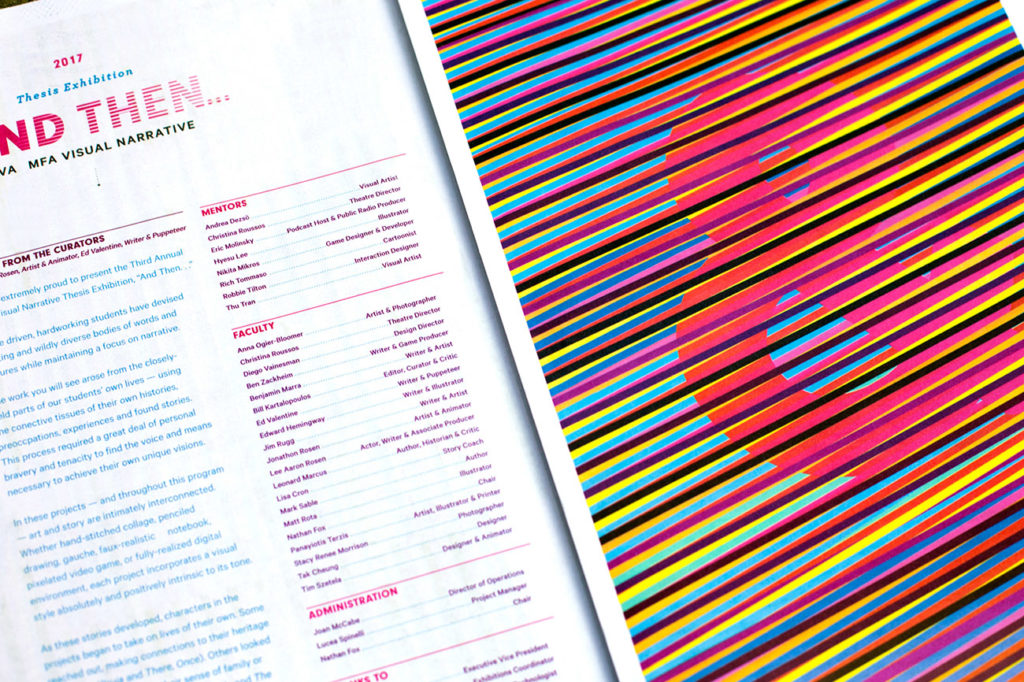
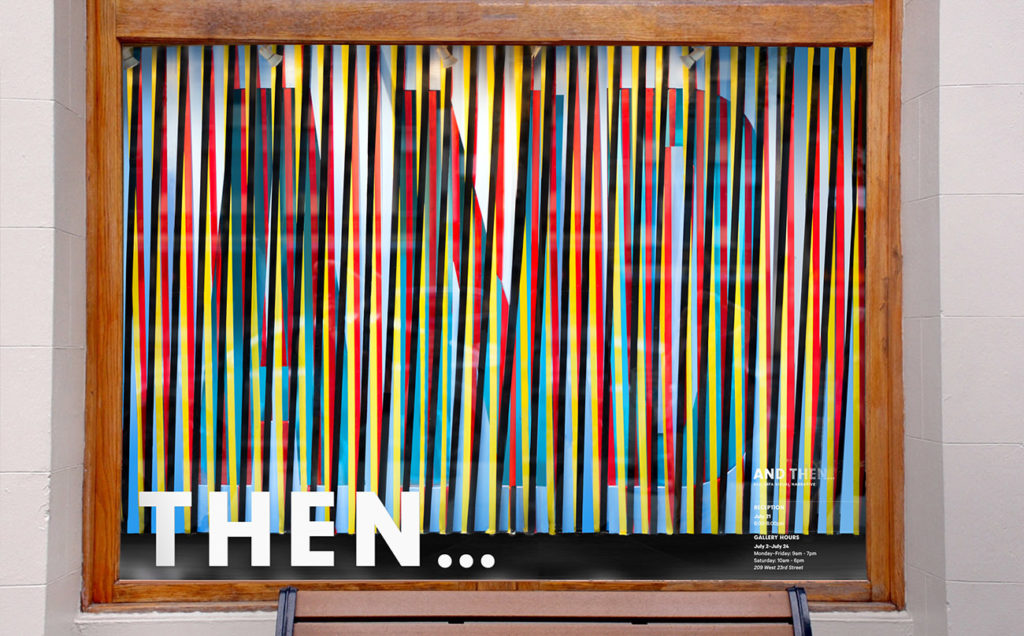
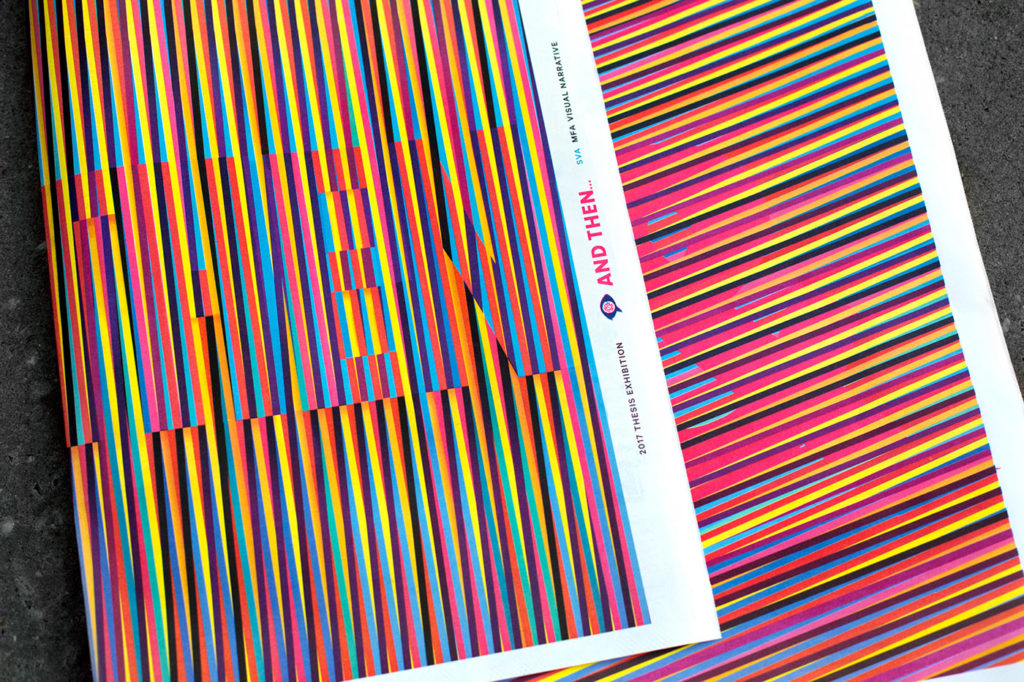

Kelli Anderson is an artist, designer, and tinkerer who pushes the limits of ordinary materials and formats by seeking out hidden possibility in the physical and digital world. In 2008, she worked as part of a large team, including the Yes Men, to distribute a meticulously recreated copy of the New York Times — filled only with articles from a Utopian future. As a group, they won the Ars Electronica Prix Award of Distinction in 2009. In 2011, she created a paper record player that garnered major attention from numerous media outlets including Mashable, Kottke, Slashdot, Make, PCWorld, Swiss Miss, Wired, the Toronto Star, and NPR. Her work has been published by Wired UK, Gestalten, Rockport Publishing, iDN, How Design Magazine, and Hemispheres Magazine. In 2011, she left her position as a digital collections photographer at the American Museum of Natural History to focus on independent work. Her live/work space houses a 1919 letterpress and “an assortment of other benevolent contraptions.” She teaches art history as part of Pratt’s PreCollege program every summer.